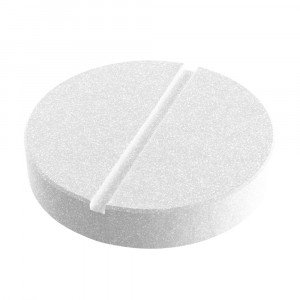 Welcome
Welcome
“May all be happy, may all be healed, may all be at peace and may no one ever suffer."
Sanofi Bangladesh Ltd.

Avil 22.7mg

Generic for Diseases
- Bronchitis
- Influenza (flu)
- Common cold
- Fever
- Dengue fever
- Q fever
- Measles
- Filaria
- Chickenpox
- Scabies
- Itchy skin (pruritus)
- Pruritus Vulva
- Hives (Cold urticaria)
- Nasal polyps
- Laryngitis
- Ear infection (middle ear)
- Sore throat
- Keratitis
- Pink eye (conjunctivitis)
- Allergies
- Snake bite
- Allergic conditions
- Allergic conjunctivitis
- Allergies
- Insect bites
- Motion sickness
- Transfusion reactions
Pheniramine is a competitive H1 histamine receptor antagonist. Like other alkylamine antihistamines it is also antagonist of muscarinic cholinergic receptors and possesses local anesthetic properties. However, the concentration required for the latter effect is probably not achieved at therapeutic dose
Pharmacology
Pheniramine competes with histamine for the histamine H1 receptor, acting as an inverse agonist once bound. The reduction in H1 receptor activity is responsible for reduced itching as well as reduced vasodilation and capillary leakage leading to less redness and edema. This can be seen in the suppression of the histamine-induced wheal (swelling) and flare (vasodilation) response. Inverse agonism of the H1 receptor in the CNS is also responsible for the sedation produced by first-generation antihistamines like pheniramine. The binding of pheniramine to H4 receptors, and subsequent inverse agonism, may also contribute to reduced itching by antagonizing inflammation.
Pheniramine Maleate is indicated for-
- Allergic conditions including hay fever, drug rashes, angioneurotic edema, serum sickness, allergic conjunctivitis, food allergy etc.
- Conditions of the respiratory tract that are accompanied by increased secretion, including vasomotor rhinitis and acute rhinitis.
- All itching skin conditions, including neurodermatitis, eczema of any origin, lichen planus, acute and chronic urticaria, pruritis of the anus or genitals, pruritus in icterus and diabetes, radiation sickness etc.
- Prevention and treatment of motion sickness.
- Prevention and treatment of nausea, vomiting and vertigo due to Meniere’s disease and other labyrinthine disturbances.
Doses must be individually determined in all cases and should be taken with or soon after food. Treatment should be commenced at the lowest possible dose because experience has shown that antihistamines are often effective at low doses. The maximum dose of 3 mg/kg per day should not be exceeded. Elderly patients should use the adult dose with caution.
To prevent travel sickness, it is recommended that the first dose be taken at least 30 minutes before traveling. Due to the risk of drowsiness, the patient should not drive a motor vehicle or operate machinery after taking a dose.
Pheniramine Maleate tablets:
- In adults and children over 10 years of age: Treatment is commenced with half a tablet taken up to three times daily. This dose may be increased to one tablet taken up to three times daily if required.
- Children 5-10 years of age: Half a tablet up to three times daily. Pheniramine Maleate tablets are not recommended in children under 5 years of age.
- Patients with hypersensitivity to pheniramine or any other ingredient (eg. Methyl hydroxybenzoate or propyl hydroxybenzoate in the syrup).
- Patients with symptomatic prostatic hypertrophy.
- Patients receiving MAO-inhibitor therapy.
- Newborn and premature infants.
The most common adverse reaction is sedation, which often disappears after a few days if tolerance is acquired. Hypersensitivity reactions have been reported.
- Central Nervous System: Lassitude, dizziness, tinnitus, inability to concentrate, incoordination, irritability, insomnia and tremors. Agitation and convulsions, especially in children and restlessness, disorientation and hallucinations in adults, are common symptoms following overdose.
- Gastrointestinal: Nausea, vomiting, diarrhoea, colic, epigastric pain, anorexia, dryness of mouth and constipation.
- Genitourinary: Urinary retention.
- Cardiovascular: Palpitations, headache.
- Ocular: Blurred vision, increased intraocular pressure.
- Musculoskeletal: Muscular weakness.
- Haematological: Rare cases of blood dyscrasias including agranulocytosis and haemolytic anaemia have been reported.
Overdose Effects
Symptoms: Antihistamine drugs in toxic doses produce a complex of CNS excitatory and depressant effects. Accidental ingestion in small children has resulted in convulsions and sometimes death.
Management: As there is no specific antidote, treatment should be symptomatic and supportive. Induction of vomiting should only be used immediately after ingestion as the sedative action of any absorbed antihistamine can lead to life-threatening pulmonary aspiration during emesis. Gastric lavage with a cuffed endotracheal tube in situ may be useful for some time after ingestion of antihistamines as their anticholinergic action slows down gastric emptying. Stimulants should not be used as they may precipitate convulsions. Diazepam or short-acting barbiturates may be used to control convulsions. Vasopressors may be used to treat hypotension. Mechanical support of respiration may be required if respiration is seriously depressed. Continuous ECG monitoring is recommended if cardiac toxicity develops, which can be treated with centrally-acting anticholinesterases such as physostigmine.
- Pheniramine Maleate may cause drowsiness. Both the dosage and the time of administration should be carefully considered in patients whose activities (e.g. driving a car or operating machinery) demand special concentration.
- Patients should be cautioned against the simultaneous ingestion of alcohol and other central nervous system depressants. Pheniramine Maleate may possibly be hallucinogenic in toxic doses. Due to the possible CNS stimulating effects of antihistamines, pheniramine has the potential for abuse.
- Due to the anticholinergic effect of pheniramine, caution and close monitoring are required if it is used in patients with conditions such as prostatic hypertrophy, narrow angle glaucoma, asthma or severe cardiovascular disease.
- The anti-emetic effect of pheniramine may mask the signs of other conditions. Products containing pheniramine should not be taken on an empty stomach.
Pregnancy & Lactation
pregnancy Category A. Use only if strictly indicated. Use only if strictly indicated.
Avil 22.7mg and more Available Brands
Leveron 500mg / 5m...
Motilon 10mg
Expres 5mg
Ascabiol 1.25gm / 5...
Stamaril 1000IU / 0...
Oracyn-K 125mg / 5m...
Amaryl 4mg
Lantus SoloStar 100IU / ml
...
To be happy, beautiful, healthy, wealthy, hale and long-lived stay with DM3S.